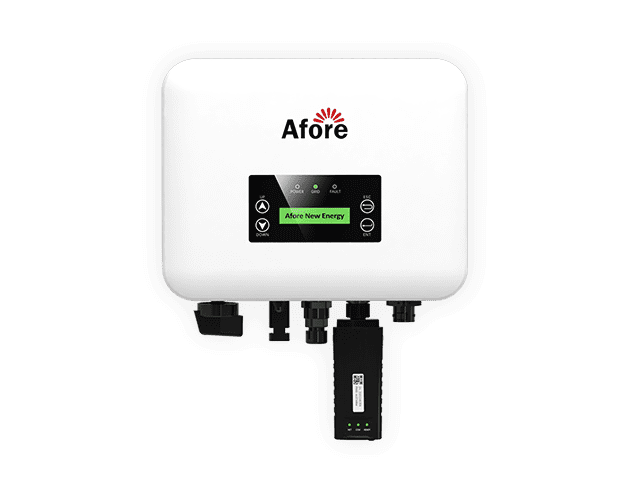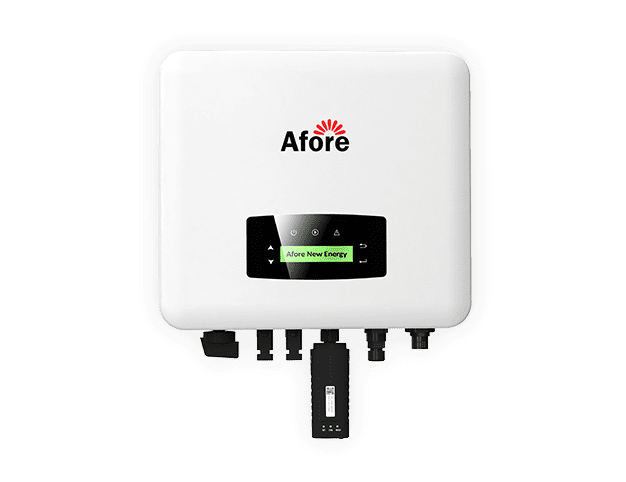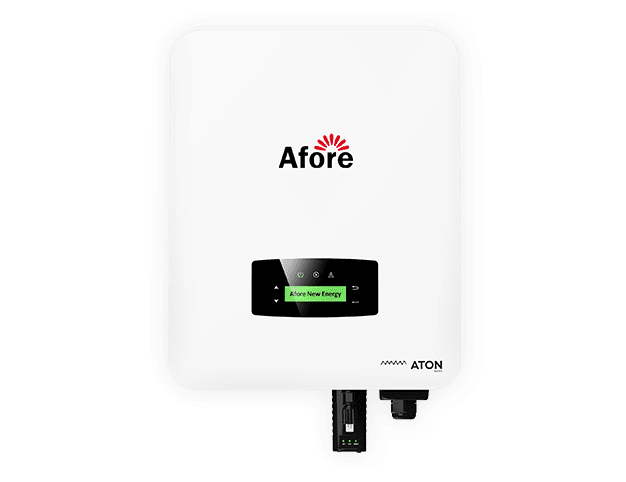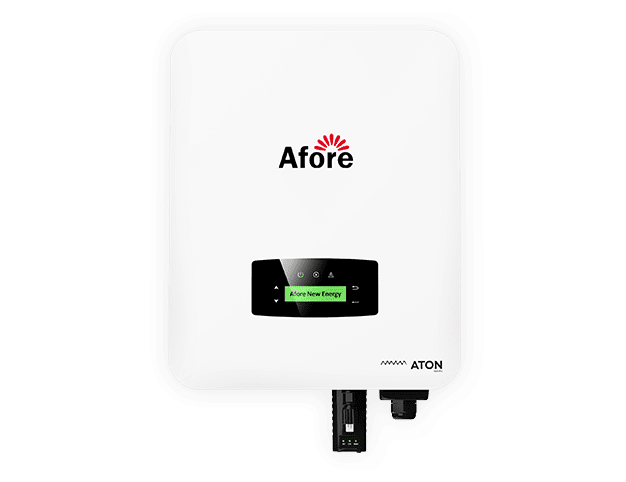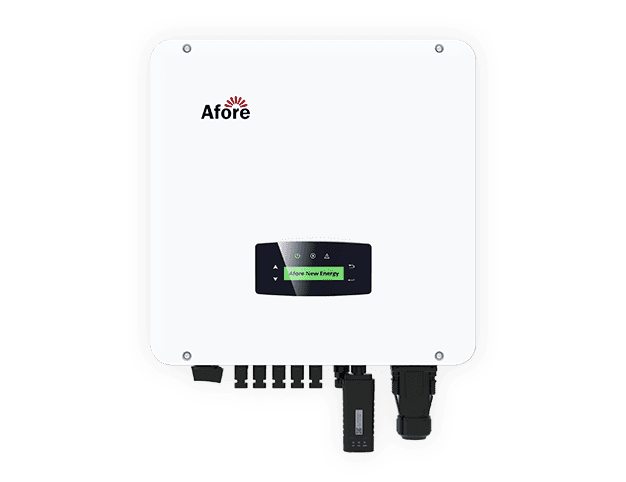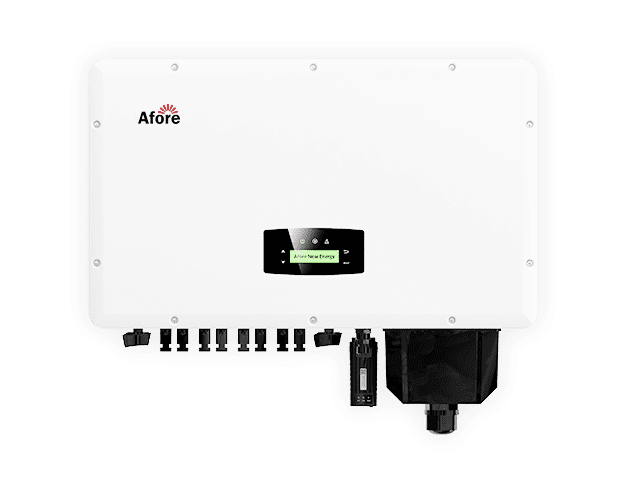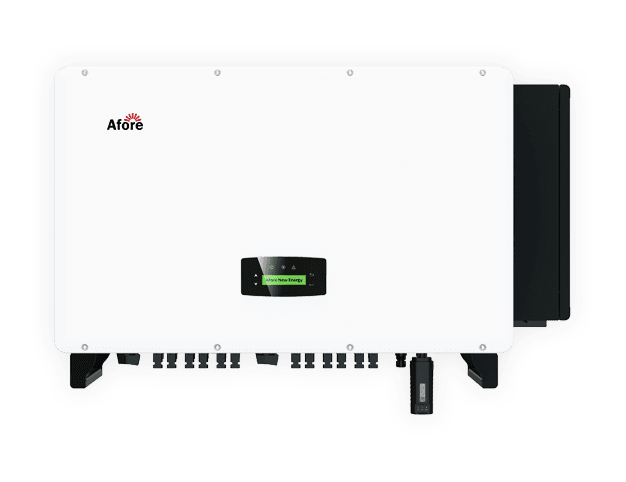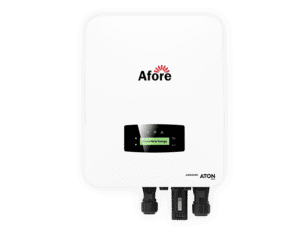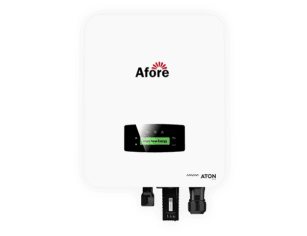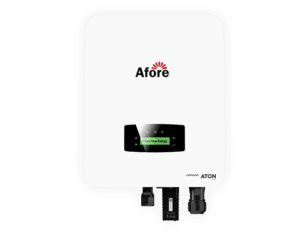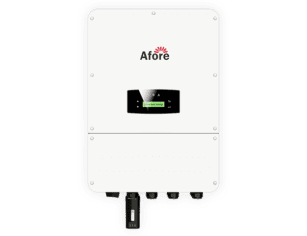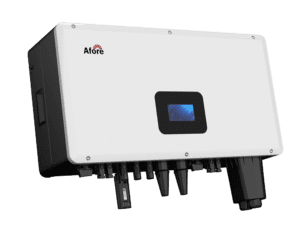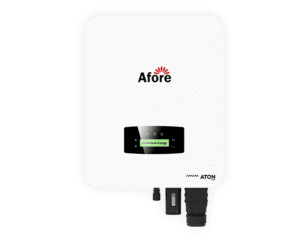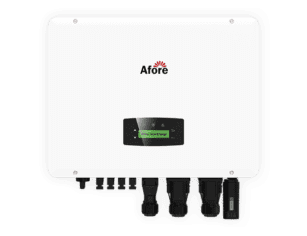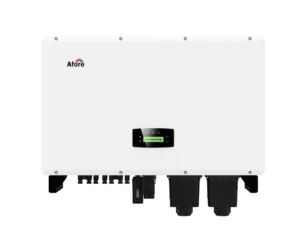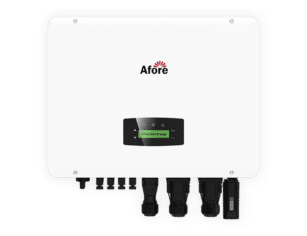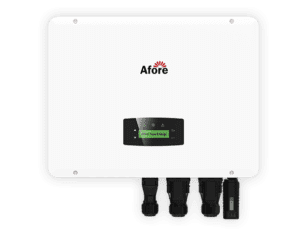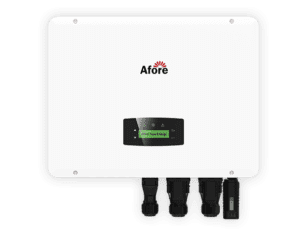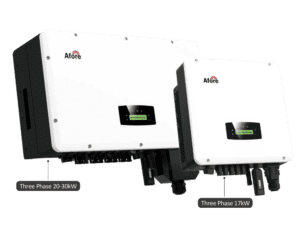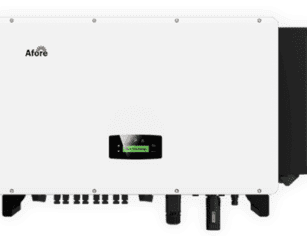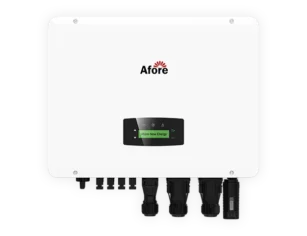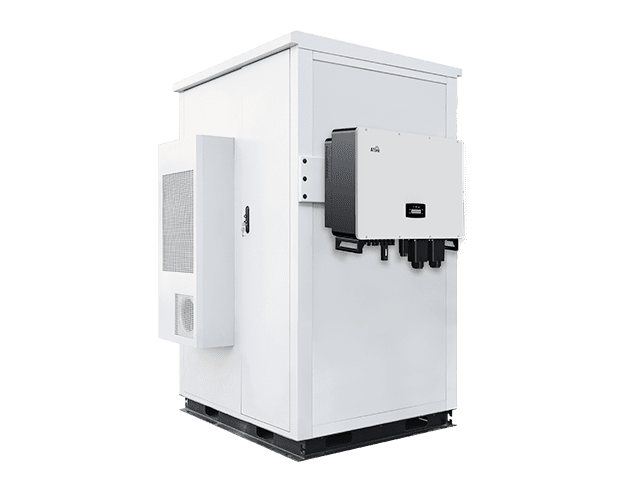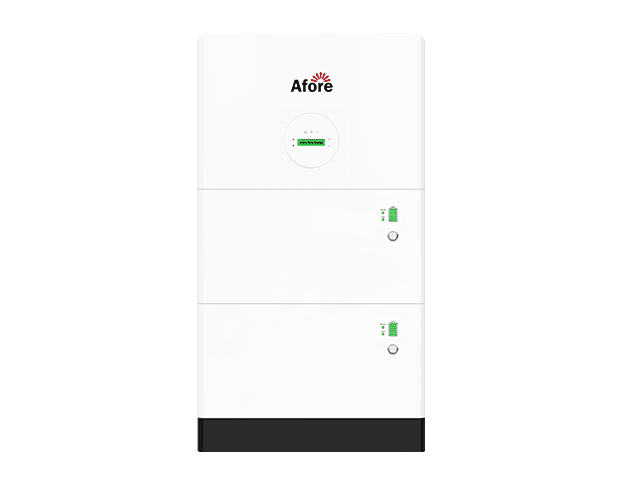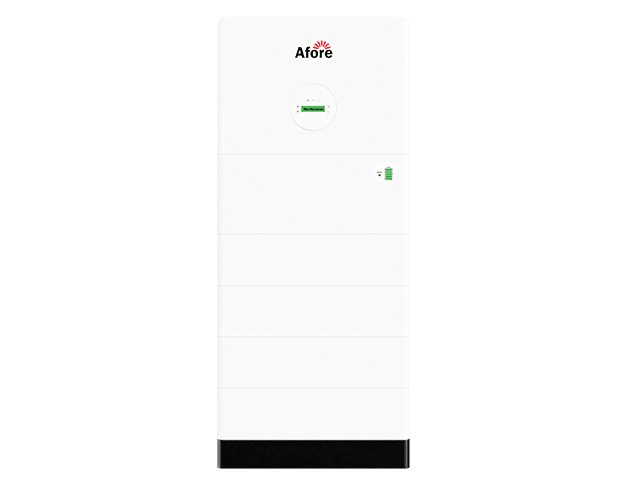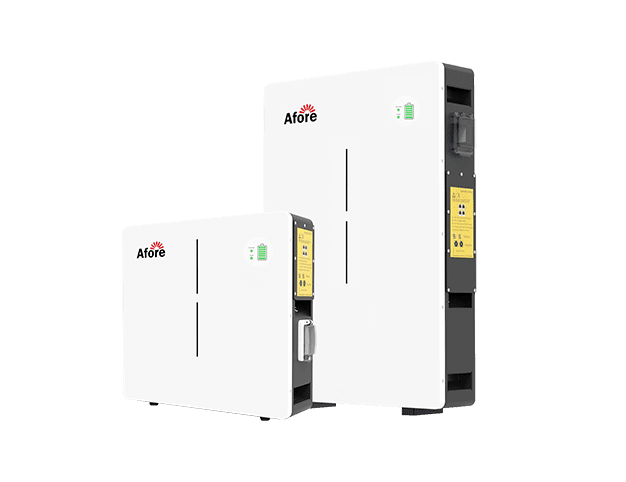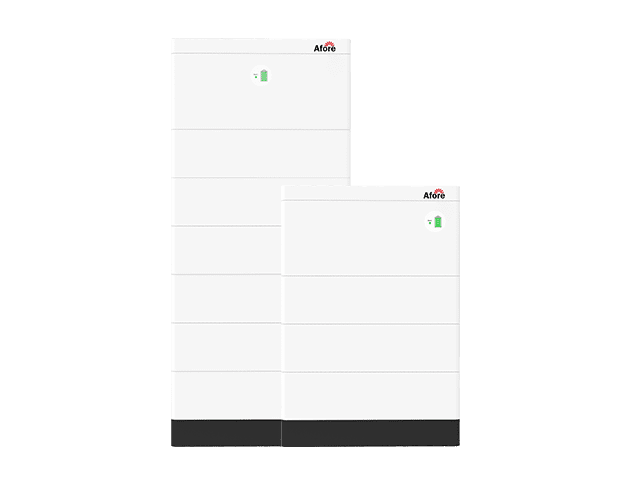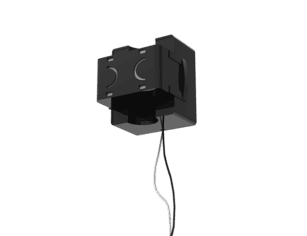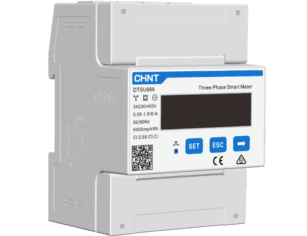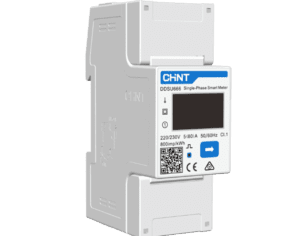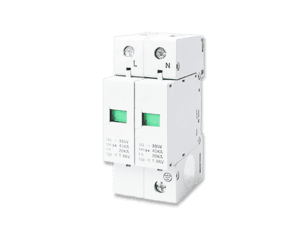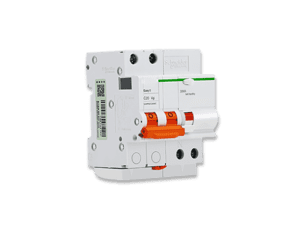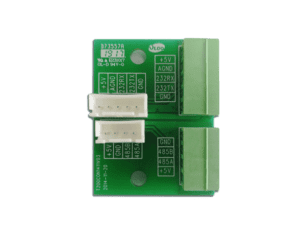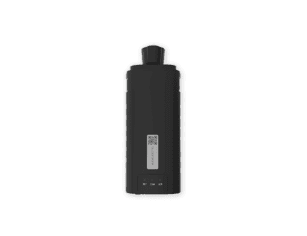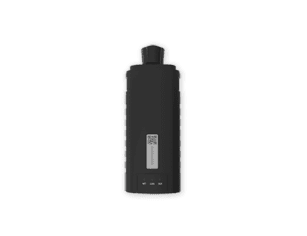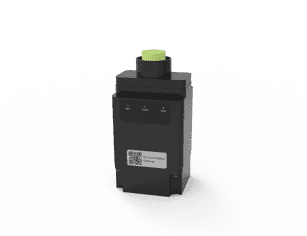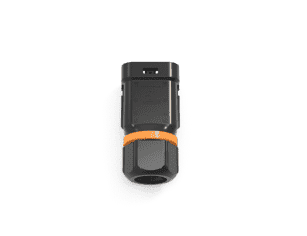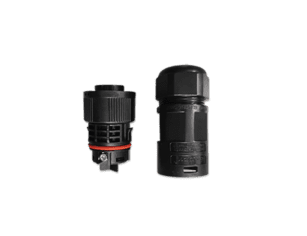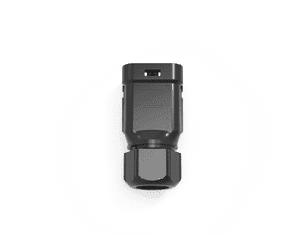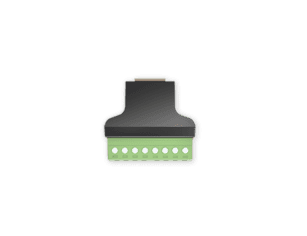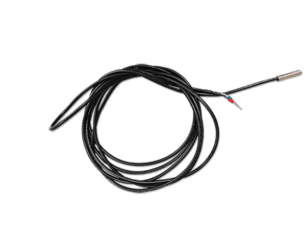Auswahl des besten netzunabhängigen Solarwechselrichters für Energieunabhängigkeit
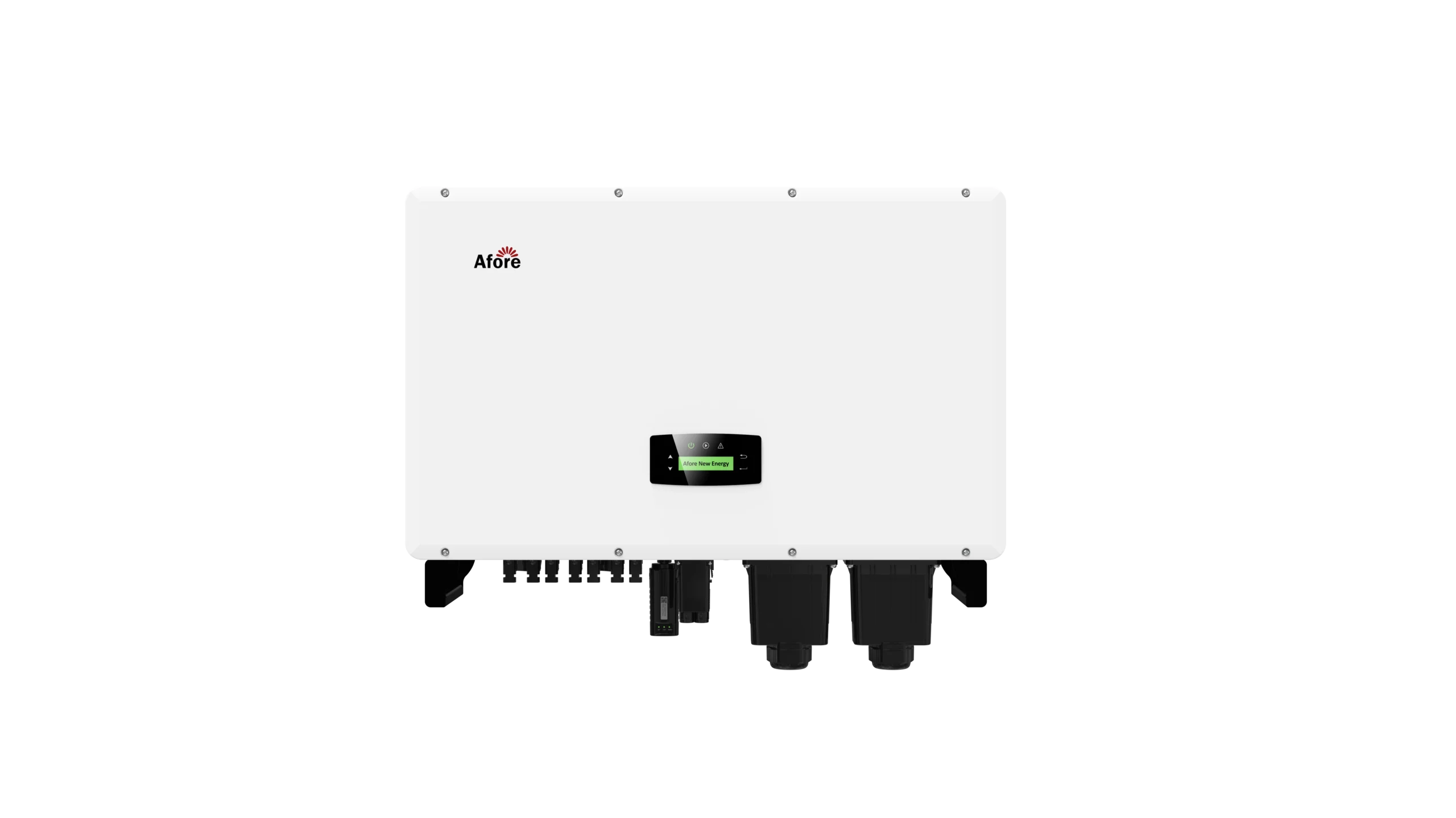
Inhaltsübersicht
Die Hauptfunktion des Netzersatzes Solarwechselrichter ist die Umwandlung von Gleichstrom in nutzbaren Wechselstrom für die Verwendung durch Haushaltsgeräte. Und ohne Anschluss an ein Stromnetz benötigen Sie den besten netzunabhängigen Solarwechselrichter, um eine stabile Stromversorgung von Ihren Solarmodulen zu Ihrem Haus zu gewährleisten.
Die besten netzunabhängigen Solarwechselrichter können auch Elektroautos aufladen und Energie für den späteren Gebrauch speichern. Das Tolle an einem netzunabhängigen Wechselrichter ist, dass er Solarwechselrichter ist, dass Sie völlig unabhängig sind und sich nicht auf andere, weniger zuverlässige Anbieter verlassen müssen.
Daher ist dieser Blog geschrieben, um Solar-Wechselrichter Off-Grid und einige verschiedene Arten von ihm einzuführen. Wir werden auch die 3 besten netzunabhängigen Solarwechselrichter empfehlen, um Ihnen bei der Auswahl eines Wechselrichters zu helfen.
Eine Einführung to Off Grid Solar-Wechselrichter
Netzunabhängige Solarwechselrichter umfassen Batteriespeicher und Solarmodule, sodass Sie zu Hause Strom aus beiden Quellen beziehen können.
In der Regel beziehen netzunabhängige Solarwechselrichter ihren Strom von Sonnenkollektoren, um Ihr Haus morgens mit Strom zu versorgen, und verwenden nachts Batterien.
Netzunabhängige Solarwechselrichter steuern den Energiefluss, der sowohl Gleich- als auch Wechselstromquellen steuert, die dann als Ersatz für die herkömmliche Elektrizität in Ihrem eigenen Haus verwendet werden.
Diese Art von Wechselrichter ist ideal für diejenigen, die Solarenergie für die Stromversorgung ihrer Häuser nutzen wollen. Jeder von uns hat verschiedene Arten von Geräten, wie Fernseher, Küchengeräte, Waschmaschinen und die Lichter, die wir im Haus benutzen.
Allein für die Beleuchtung ist eine Menge Energie erforderlich, vor allem, wenn sie rund um die Uhr funktionieren soll. Deshalb wandeln und speichern netzunabhängige Solarwechselrichter die Energie, die Sie Tag und Nacht nutzen können, um sicherzustellen, dass alle Ihre Geräte funktionieren, ohne Ihre Stromrechnung zu erhöhen.
Netzunabhängige oder autarke Stromversorgungssysteme erfordern oft leistungsfähigere Batteriewechselrichter und integrierte Ladegeräte, die für AC- oder DC-gekoppelte Solarsysteme eingerichtet werden können. Moderne, flexible netzunabhängige Solarwechselrichter-Ladegeräte, auch bekannt als Multimode-Wechselrichter, können auch für fortschrittliche hybride netzgekoppelte Systeme verwendet werden.
Kleine und selbst gebaute netzunabhängige Systeme verwenden einfache MPPT-Solarladeregler, die auch als Solarregler bezeichnet werden. Dabei handelt es sich nicht um Wechselrichter, sondern um Gleichstrom-Solarzellen-Ladegeräte, die zwischen das Solarmodul und die Batterie geschaltet werden, um den Ladevorgang der Batterie zu regeln und sicherzustellen, dass die Batterie ordnungsgemäß geladen oder, was noch wichtiger ist, nicht überladen wird.
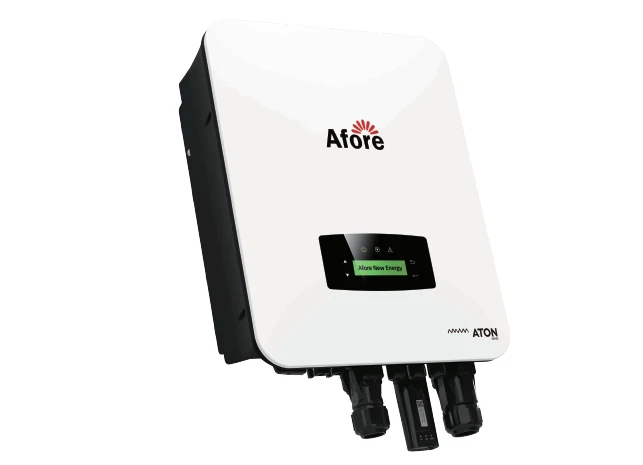
Verschiedene Arten von netzunabhängigen Solarwechselrichtern
Es gibt zwei Arten von netzunabhängigen Solarwechselrichtern: reine Sinuswellen und modifizierte Sinuswellen, die sich in der Regel in drei Aspekten unterscheiden, nämlich: Qualität der Ausgangsleistung, Kompatibilität und Preis. Bei der Verarbeitung der Stromqualität des Ausgangs dieser netzunabhängigen Solarwechselrichter ist die Stromqualität von reinen Sinuswellen sauberer. Da diese beiden Messungen als AC-Ausgangsstromqualität bezeichnet werden, ist es möglich, dass die Ausgangsstromqualität einer reinen Sinuswelle besser oder besser ist als die Ausgangsstromqualität des Netzes. Daher kann man vermuten, dass reine Sinuswellen eine höhere Ausgangsqualität liefern als modifizierte Sinuswellen.
Ein netzunabhängiger Solarwechselrichter mit einer höheren Ausgangsqualität gilt als empfehlenswerter, auch wenn er relativ teurer ist. Außerdem können fast alle elektrischen Geräte diesen Wechselrichtertyp verwenden. Ein weiterer Grund, warum die Korrektur einer Sinuswelle billiger ist als eine andere, besteht darin, dass sie bei bestimmten Geräten Schäden und Probleme verursachen kann. So neigen beispielsweise Pumpen und Motoren in Kühlschränken dazu, schneller durchzubrennen, und Kompressoren laufen mit höheren Temperaturen, was zu Geräteschäden führt.
Korrigierte Sinuswellen können nicht nur Geräte, sondern auch empfindliche elektronische Geräte beschädigen. Diese Art von TV-Inverter verursacht in der Regel Linien und ein Summen auf dem Bildschirm, was zu einer verschlechterten Video- und Audioqualität führt. Einige Geräte funktionieren mit diesem Wechselrichter nicht vollständig. Sie können jedoch einen modifizierten Sinuswechselrichter einem reinen Sinuswechselrichter vorziehen, da er billiger ist, wenn Sie sicher sind, dass er mit dem Gerät funktioniert. Zusätzlich zu diesen Arten von Wechselrichtern können Sie eine vorverdrahtete Stromzentrale installieren, die einen Wechselrichter, ein Ladegerät, eine Fernbedienung und einen Schutzschalter sowie einen Batteriemonitor und einen Entstörer enthält.
Die Vorteile von netzunabhängigen Solar-Wechselrichtern
Der grundlegende Vorteil von netzunabhängigen Solarwechselrichtern ist die Energieunabhängigkeit. Weitere Vorteile dieser Technologie sind die Fähigkeit, selbst in den entlegensten Gebieten eine kontinuierliche Stromversorgung bei Stromausfällen zu gewährleisten und die Stromrechnungen zu senken und gleichzeitig die Umwelt zu schützen, indem sie sauberer und grüner wird.
Im Falle einer Katastrophe verlieren Gemeinden, die an das Hauptversorgungsnetz angeschlossen sind, ihren Strom. Solche Stromausfälle oder Gräueltaten können elektrische Schäden verursachen.
Einnahmeverluste können auch entstehen, wenn Ihr Unternehmen hauptsächlich vom Stromverbrauch abhängig ist.
Ein Wechselrichter ist in der Tat von Vorteil, da der von den Deep-Cycle-Batterien der Solarmodule gespeicherte Gleichstrom nach der Umwandlung in Wechselstrom eine gleichmäßige Stromversorgung für Ihr Haus gewährleisten kann.
Wenn Sie einen netzunabhängigen Solarwechselrichter besitzen, erleben Sie auch finanzielle Freiheit, weil die Netzgesellschaft die monatlichen Stromrechnungen gesenkt hat, was bedeutet, dass Sie auf lange Sicht Geld sparen können.
Da die Netzbetreiber nicht in der Lage sind, einige ländliche Gebiete mit Strom zu versorgen, könnte das Gerät dazu beitragen, dass die Haushalte Zugang zu der gleichen Stromqualität erhalten, wie sie in stark urbanisierten Gebieten üblich ist. Dies ist möglich, weil die umgewandelte Wechselstromleistung ursprünglich aus Sonnenlicht stammt.
Ein weiterer Vorteil des Produkts ist, dass es erneuerbare Energie liefert und dazu beiträgt, den Planeten zu begrünen. Solarenergie ist überall verfügbar, so dass das Gerät unabhängig von Ihrem Aufenthaltsort funktioniert.
Es ist bekannt, dass Energieversorgungsunternehmen die Luftverschmutzung und andere Umweltprobleme verursachen, und die Förderung dieser Technologie wird dazu beitragen, den Planeten zu retten.
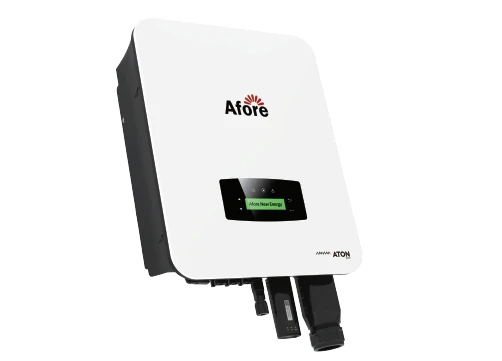
3 Beste Off Grid Solar-Wechselrichter
Einphasiger Hybrid-Speicher-Wechselrichter 8-12 kW
- Max.240A: Max. Lade-/Entladestrom 240A
- PV-Übergröße: 1,5-fache PV-Übergröße
- MPPT-Kanäle: Bis zu 3 MPPT-Kanäle
- USV-Funktion: Schaltzeit < 10ms
- Parallel: Max.6 Parallele Stapelung
- Eingabe: Unterstützung Generator
| Technische Daten | AF8K-SLP | AF9K-SLP | AF10K-SLP | AF11K-SLP | AF12K-SLP |
| PV-Eingang | |||||
| Max. Eingangsleistung (kW) | 12 | 13.5 | 15 | 16.5 | 18 |
| Max.PV Spannung (V) | 550 | ||||
| MPPT-Bereich (V) | 80-500 | ||||
| Voller MPPT-Bereich (V) | 150-500 | 160-500 | 130-500 | 150-500 | 160-500 |
| Normale Spannung (V) | 360 | ||||
| Einschaltspannung (V) | 100 | ||||
| Max. Eingangsstrom (A) | 18.5×3 | ||||
| Max. kurzer Strom (A) | 26×3 | ||||
| Anzahl der MPP-Tracker/ Anzahl der PV-Strings | 3/1+1+2 | ||||
| Batterieanschluss | |||||
| Max. Lade-/Entladeleistung (kW) | 8 | 9 | 10 | 11 | 12 |
| Max. Lade-/Entladestrom (A) | 200 | 240 | 240 | 240 | 240 |
| Batterie Normalspannung (V) | 51.2 | ||||
| Batteriespannungsbereich (V) | 40-60 | ||||
| Akku-Typ | Li-Ion / Blei-Säure usw. | ||||
| AC-Netz und Dieselgenerator (optional) | |||||
| Max. Dauerstrom (A) | 37 | 41 | 46 | 50 | 55 |
| Max. Dauerleistung (kVA) | 8 | 9 | 10 | 11 | 12 |
| Nominaler Netzstrom (A) | 37/35 | 41/39 | 46/44 | 50/48 | 55/52 |
| Nennspannung des Netzes (V) | 198 bis 242 @ 220 / 207 bis 253 @ 230 | ||||
| Nenn-Netzfrequenz (Hz) | 50/60 | ||||
| Leistungsfaktor | 0,999 (einstellbar von 0,8 übererregt bis 0,8 untererregt) | ||||
| Strom THD (%) | <3 | ||||
| AC-Lastausgang | |||||
| Max. Dauerstrom (A) | 37 | 41 | 46 | 50 | 55 |
| Max. Dauerleistung (kVA) | 8 | 9 | 10 | 11 | 12 |
| Max. Spitzenstrom (A) (10min) | 55.5/52.5 | 61.5/58.5 | 69/66 | 75/72 | 82.5/78 |
| Maximale Spitzenleistung (KVA) (10min) | 12 | 13.5 | 15 | 16.5 | 18 |
| Nennwechselspannung L-N (V) | 220/230 | ||||
| AC-Nennfrequenz (Hz) | 50/60 | ||||
| Umschaltzeit (ms) | Nahtlos | ||||
| Spannung THD(%) | <3 | ||||
| Wirkungsgrad | |||||
| Europäischer Wirkungsgrad (%) | 98.1 | ||||
| Max. Wirkungsgrad (%) | 96.8 | ||||
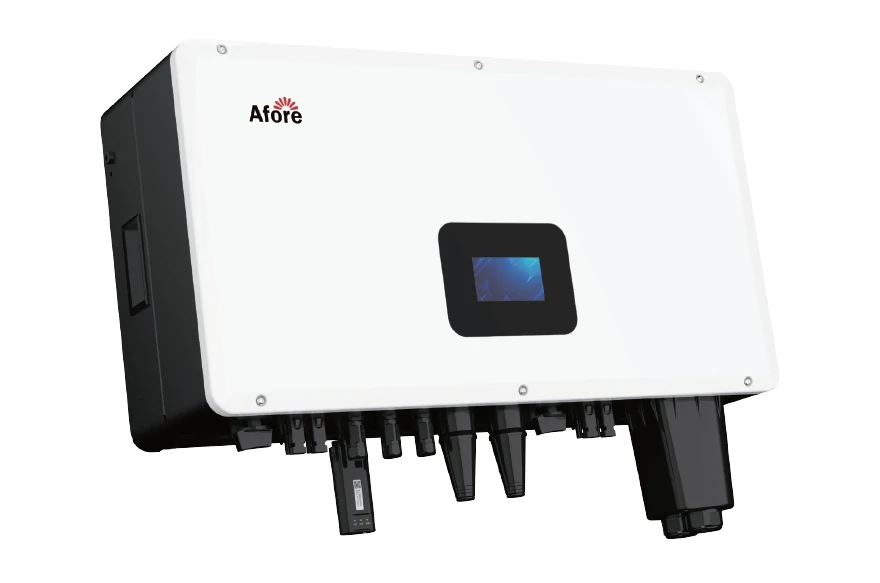
Dreiphasen-Hybrid-Speicher Wechselrichter 3-30 kW
- Natriummetallchlorid-Batterie: Unterstützung für Natriummetallchlorid-Batterie
- Breiter Bereich: Spannungsbereich (150-800V)
- 100% Unwucht: Unterstützung von Unwuchtlasten
- PV-Übergröße: 1,5-fache PV-Übergröße
- Max.40Adc: Stringstrom bis zu 40A
- USV-Funktion: Schaltzeit< 10ms
- Eingabe: Unterstützung Generator
| Technische Daten | AF3K-TH | AF4K-TH | AF5K-TH | AF6K-TH | AF8K-TH | AF10K-TH |
| PV-Eingang | ||||||
| Max. DC-Eingangsleistung (kW) | 5 | 6 | 7.5 | 9 | 12 | 15 |
| Max.PV Spannung (V) | 1000 | |||||
| Nenn-DC-Eingangsspannung (V) | 620 | |||||
| DCEingangsspannungsbereich (V) | 150-1000 | |||||
| MPPT Spannungsbereich (V) | 150-850 | |||||
| Voller MPPT-Bereich (V) | 200-850 | 250-850 | 300-850 | 500-850 | ||
| Einschaltspannung (V) | 160 | |||||
| Max. DC-Eingangsstrom (A) | 20×2 | |||||
| Max. Kurzer Strom(A) | 30×2 | |||||
| Anzahl der MPPT-Tracker/Strings | 2/2 | |||||
| Batterieanschluss | ||||||
| Batterie-Nennspannung (V) | 200 | 250 | 300 | 400 | ||
| BatterieSpannungsbereich (V) | 150-800 | |||||
| Max. Lade-/Entladestrom (A) | 30 | 30 | 30 | 30 | 30 | 30 |
| Max. Lade-/Entladeleistung (kW) | 3 | 4 | 5 | 6 | 8 | 10 |
| Aufladekurve | 3 Etappen | |||||
| Kompatibler Batterietyp | Li-Ionen-/Blei-Säure-/Natrium-Metallchlorid-Akku | |||||
| AC-Netz | ||||||
| AC-Nennausgangsleistung (kW) | 3 | 4 | 5 | 6 | 8 | 10 |
| Max. AC Eingangs-/Ausgangsleistung (kVA) | 4.5/3.3 | 6/4.4 | 7.5/5.5 | 9/6.6 | 12/8.8 | 15/11 |
| Max. AC-Ausgangsstrom (A) | 5.3 | 7 | 8.5 | 10.5 | 13.5 | 17 |
| Nennwechselspannung (V) | 230/400 | |||||
| Nominale AC-Frequenz (Hz) | 50/60 | |||||
| Leistungsfaktor | 1(-0,8-0,8) einstellbar | |||||
| Strom THD (%) | <3% | |||||
| AC-Lastausgang (Back-up) | ||||||
| Nominale Ausgangsleistung (VA) | 3000 | 4000 | 5000 | 6000 | 8000 | 10000 |
| Nominale Ausgangsspannung (V) | 230/400 | |||||
| Nominale Ausgangsfrequenz (Hz) | 50/60 | |||||
| Nominaler Ausgangsstrom (A) | 4.4 | 5.8 | 7.3 | 8.7 | 11.6 | 14.5 |
| Spitzenausgangsleistung | 3300VA,60s | 4400VA,60s | 5500VA, 60s | 6600VA, 60s | 8800VA, 60s | 11000VA, 60s |
| THDV (bei linearer Last) | <3% | |||||
| Umschaltzeit (ms) | <10 | |||||
| Wirkungsgrad | ||||||
| Europa Effizienz | 97.50% | |||||
| Max. Wirkungsgrad | 98.00% | 98.20% | ||||
| Wirkungsgrad beim Laden/Entladen der Batterie | 98.00% | |||||
| Technische Daten | AF12K-TH | AF15K-TH | AF17K-TH | AF20K-TH | AF25K-TH | AF30K-TH |
| PV-Eingang | ||||||
| Max. DC-Eingangsleistung (kW) | 18 | 22.5 | 25.5 | 30 | 37.5 | 45 |
| Max.PV Spannung(V) | 1000 | |||||
| Nenn-DC-Eingangsspannung (V) | 620 | |||||
| DC-Eingangsspannungsbereich (V) | 150-1000 | |||||
| MPPT Spannungsbereich (V) | 150-850 | |||||
| Voller MPPT-Bereich (V) | 500-850 | |||||
| Einschaltspannung (V) | 160 | |||||
| Max. DC-Eingangsstrom (A) | 20×2 | 20+32 | 32×2 | 32×2 | 40×2 | 40×2 |
| MaxKurzer Strom(A) | 30×2 | 30+48 | 48×2 | 48×2 | 60×2 | 60×2 |
| Anzahl der MPPT Tracker / Strings | 2/2 | 2/3 | 2/4 | 2/4 | 2/4 | 2/4 |
| Batterieanschluss | ||||||
| Batterie-Nennspannung (V) | 450 | 500 | 400 | 500 | 500 | 550 |
| Batteriespannungsbereich (V) | 150-800 | |||||
| Max. Lade-/Entladestrom (A) | 30 | 50 | 50 | 50 | 60 | 60 |
| Max. Lade-/Entladeleistung (kW) | 12 | 15 | 17 | 20 | 25 | 30 |
| Aufladekurve | 3 Etappen | |||||
| Kompatibler Batterietyp | Li-Ion/Blei-Säure/Natrium-Metallchlorid-Batterie | |||||
| AC-Netz | ||||||
| AC-Nennausgangsleistung (kW) | 12 | 15 | 17 | 20 | 25 | 30 |
| Max. AC Eingangs-/Ausgangsleistung (kVA) | 18/13.2 | 22.5/16.5 | 25.5/18.7 | 30/22 | 37.5/27.5 | 45/33 |
| Max. AC-Ausgangsstrom (A) | 21.5 | 27 | 30 | 32 | 40 | 48 |
| Nennwechselspannung (V) | 230/400 | |||||
| Nominale AC-Frequenz (Hz) | 50/60 | |||||
| Leistungsfaktor | 1 (-0,8-0,8) einstellbar | |||||
| Strom THD (%) | <3% | |||||
| AC-Lastausgang (Back-up) | ||||||
| Nominale Ausgangsleistung (VA) | 12000 | 15000 | 17000 | 20000 | 25000 | 30000 |
| Nominale Ausgangsspannung (V) | 230/400 | |||||
| Nominale Ausgangsfrequenz (Hz) | 50/60 | |||||
| Nominaler Ausgangsstrom (A) | 17.4 | 21.8 | 24.7 | 29 | 36.3 | 43.5 |
| Spitzenausgangsleistung | 13200VA,60s | 16500VA,60s | 18700VA, 60s | 22000VA,60s | 27500VA,60s | 33000VA,60s |
| THDV (bei linearer Last) | <3% | |||||
| Umschaltzeit (ms) | <10 | |||||
| Wirkungsgrad | ||||||
| Europa Effizienz | 97.50% | 97.80% | 98.00% | 98.10% | ||
| Maximaler Wirkungsgrad | 98.30% | 98.50% | ||||
| Wirkungsgrad beim Laden/Entladen der Batterie | 98.00% | |||||
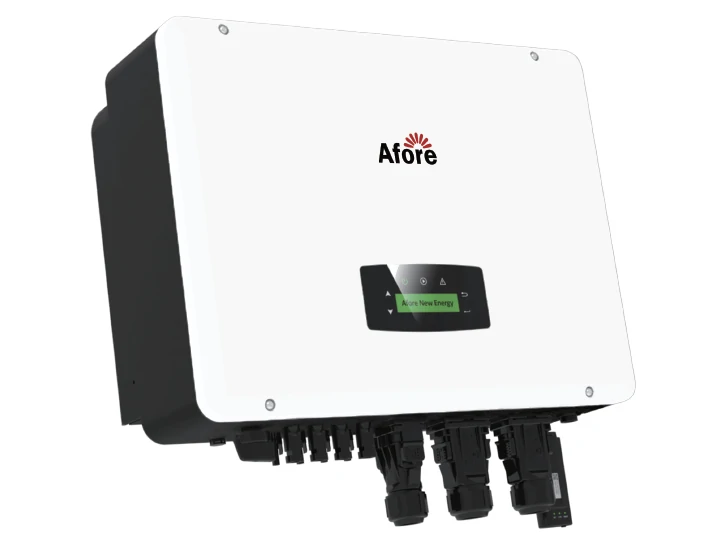
Dreiphasiger PV-String-Wechselrichter 40-60 kW Niedervolt-Serie
- SMART: Intelligente String-Überwachung, intelligenter L-V-Kurven-Scan
- SCHUTZ: Typ II Gleichstrom- und Wechselstrom-Beleuchtungsschutz
- MAX.38Adc: Stringstrom bis zu 38A
- PV-ÜBERGRÖSSE: >1,5 Zeit PV Übergröße Eingang
- POWER FACTOR: Wirk- und Blindleistungskompensation
- ANTI-FLOW: Anti-Feed-in-Funktion
| Technische Daten | BNT040KTA | BNT050KTA | BNT060KTA |
| PV-Eingangsdaten | |||
| Max. DC-Leistung (W) | 60000 | 75000 | 90000 |
| Max.DC Spannung(V) | 750 | ||
| MPPT Spannungsbereich (V) | 200-750 | ||
| MPPT Volle Leistung Spannungsbereich (V) | 300-750 | ||
| Nenneingangsspannung (V) | 400 | ||
| Einschaltspannung (V) | 200 | ||
| Max. Eingangsstrom (A) | 38×6 | ||
| Max. Kurzer Strom (A) | 48×6 | ||
| Anzahl der MPP-Tracker / Anzahl der PV-Strings | 6/12 | ||
| Eingangsstecker Typ | MC4 | ||
| AC-Ausgangsdaten | |||
| Max. Ausgangsleistung (VA) | 44000 | 55000 | 66000 |
| Nominale Ausgangsleistung (W) | 40000 | 50000 | 60000 |
| Max. Ausgangsstrom (A) | 120 | 143 | 158 |
| Nominale Ausgangsspannung( V) | 3P+N+PE/3P+PE 133/230 | ||
| Netzspannungsbereich | 180Vac-260Vac (entsprechend der örtlichen Norm) | ||
| Nominale Ausgangsfrequenz (Hz) | 50/60 | ||
| Netzfrequenzbereich | 45-55Hz/54-66Hz (je nach örtlichem Standard) | ||
| Ausgangsleistungsfaktor | 1 Standard (einstellbar von 0,8 voreilend bis 0,8 nacheilend) | ||
| Ausgangsstrom THD | <3% | ||
| Wirkungsgrad | |||
| Max. Wirkungsgrad | 99.00% | ||
| Euro-Effizienz | 93.00% | 98.40% | |
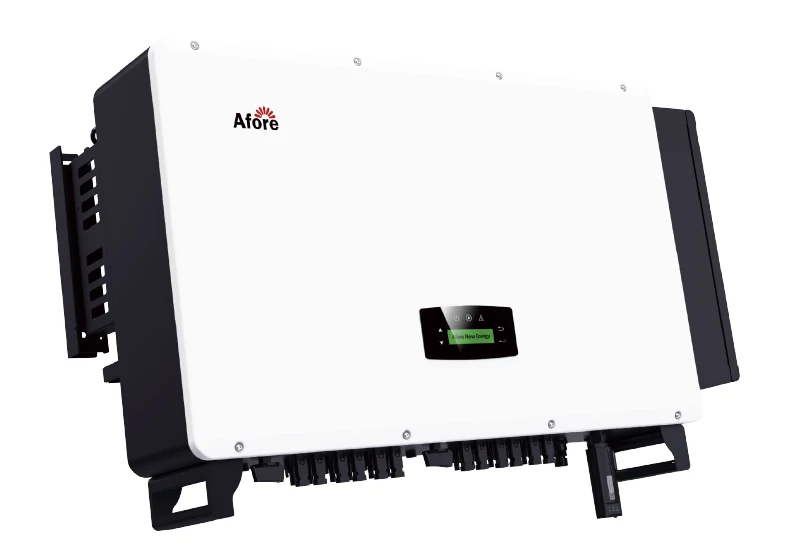
Was machen die besten Off Grid Solar-Wechselrichter gemeinsam haben?
Die besten netzunabhängigen Wechselrichter sind All-in-One-Lösungen. Sie kombinieren drei wesentliche Teile in einer vorverkabelten Konfiguration:
- Ein MPPT-Solarladeregler
- Ein reiner Sinus-Wechselrichter
- Ein AC-Gleichstrom-Ladegerät (Generator/Netzersatz-Ladegerät)
Darüber hinaus unterstützen sie alle die neuesten Lithium-Batterien und verfügen über eine spezielle App für die Cloud-Überwachung und Online-Konfiguration.
Wie man das beste Angebot auswählt Netzgekoppelter Solarwechselrichter?
Ausgangsspannung des Wechselrichters
Diese richtet sich nach Ihren Lastanforderungen und entspricht in der Regel der Standardversorgungsspannung/-frequenz in Ihrem Land/Ihrer Region. Die Ausgangsspannung des netzunabhängigen Solarwechselrichters sollte der Nennspannung der Last entsprechen. 240 V in Europa und Afrika und 120 V in den USA. Die Wechselrichter sollten in Afrika und Europa mit 50 Hz und in den Vereinigten Staaten mit 60 Hz betrieben werden.
Leistungsbereich des Wechselrichters
Bei Solaranlagen ist der Leistungsbereich wichtig. Sie sollten sich vergewissern, dass die von Ihnen gewählte Anlage Ihren Strombedarf decken kann. Selbst wenn Sie genügend Paneele haben, um die richtige Menge an Strom zu erzeugen, macht es wenig Sinn, wenn Ihr Wechselrichter die Last nicht bewältigen kann. Daher ist auch der Leistungsbereich des Wechselrichters wichtig. Im Folgenden finden Sie die verschiedenen Leistungsbereiche von Wechselrichtern und ihre typischen Anwendungen:
- 1 bis 2 kW: Kleine Kabine mit Licht, TV, Kühlschrank und Telefon.
- 2 bis 4 kW: Größere Hütten und einige kleine energieeffiziente Häuser.
- 4 bis 8 kW: Die meisten netzunabhängigen Haushalte.
- 8 bis 16 kW: größere netzunabhängige Häuser, Bauernhöfe oder Ranches und kleine Unternehmen.
Obwohl es größere und kleinere Wechselrichter als die oben genannten gibt, sind dies die beliebtesten Optionen, wobei 4 kW und 8 kW bevorzugt werden.
Eingabe der Gleichspannung des Wechselrichters
Nachdem wir die Leistung und die Marke/den Hersteller des Solarwechselrichters ausgewählt haben, finden wir im Datenblatt des Wechselrichters einen entsprechenden DC-Eingangsspannungsbereich und müssen die dazu passende Batteriespannung wählen.
Der Wechselrichter mit eingebautem Solarladeregler ist MPPT oder PWM
MPPT ist technisch besser, weil es die hohe Spannung des Solarmoduls in eine niedrigere Spannung umwandeln kann, so dass die Batterie mit geringem Verlust (hoher Wirkungsgrad) geladen wird, aber es kostet mehr als der PWM-Typ. Andererseits, wenn wir den PWM-Solarladeregler entsprechend den Spezifikationen des Solarmoduls richtig auswählen können, dann können wir bestätigen, dass er genauso gut funktioniert wie der MPPT-Laderegler.
Berücksichtigung von reinen Sinuswellen anstelle von modifizierten Sinuswellen
Einige Hersteller sprechen von reinen Sinus-Wechselrichtern. Sie müssen nicht genau wissen, wie sie funktionieren. Es reicht zu wissen, dass die Leistung eines reinen Sinus-Wechselrichters "sauberer" ist als die eines modifizierten Sinus-Wechselrichters.
Für einen reinen Sinus-Wechselrichter, der eine höhere Stromqualität liefert, ähnlich (oder besser) als unser Netz. Modifizierte Sinus-Wechselrichter sind billiger, liefern aber eine geringere Stromqualität.
Aus diesem Grund können verbesserte Sinus-Wechselrichter bei einigen Geräten Probleme verursachen. Motoren, Pumpen und Kompressoren laufen heißer und verschleißen schneller. Bei einigen empfindlichen Geräten (z. B. Computern) können sie beschädigt werden oder überhaupt nicht mehr funktionieren. Außerdem erzeugen diese Wechselrichter oft Hintergrundgeräusche in der Stereoanlage und verschlechtern die Bild- und Tonqualität einiger Fernsehgeräte.
Aus diesem Grund empfehlen wir für die meisten Anwendungen keine modifizierten Sinus-Wechselrichter; die meisten unserer netzunabhängigen Kunden verwenden reine Sinus-Wechselrichter, um diese potenziellen Probleme zu vermeiden.
Brauchen Sie eine schnelle Methode, um den Unterschied zu erkennen? Schauen Sie sich den Gesamtklirrfaktor (THD) des Wechselrichters an. THD ist ein Indikator für die Leistungsqualität, der auf dem Datenblatt eines guten Wechselrichters aufgeführt ist. Faustregel Um Probleme zu vermeiden, wählen Sie einen reinen Sinus-Wechselrichter mit einem THD-Wert von 5% oder weniger.
Sehen Sie sich die technischen Daten an
- Wirkungsgrad: Dies ist ein Maß dafür, wie viel Strom die Batterie Ihres Solarwechselrichters bei optimalen Betriebsbedingungen für Ihr Haus liefert. Ein guter Spitzenwirkungsgrad liegt bei etwa 94 bis 96 Prozent.
- Temperaturbereich: Solar-Wechselrichter werden extrem heiß. Wenn Sie planen, eine Solaranlage in einer Garage oder an einem anderen Ort zu installieren, der extremen Temperaturen ausgesetzt sein könnte, sollten Sie besonders auf den Temperaturbereich achten.
- Garantie: Solarwechselrichter werden mit einer 1-Jahres-Garantie geliefert, in der Regel 3-5 Jahre, und einige Hersteller bieten eine 10-jährige Garantieverlängerung an. Afore bietet eine Standard-Werksgarantie, die 5 Jahre ab dem Installationsdatum und höchstens 5,5 Jahre ab dem Lieferdatum von Afore gültig ist.
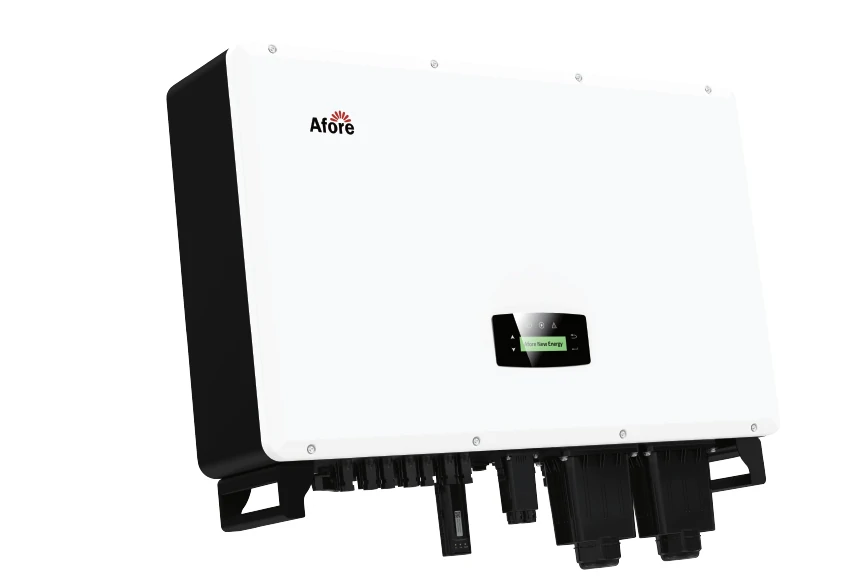
Schlussfolgerung
Ein netzunabhängiger Solarwechselrichter ist ein absolut unverzichtbarer Bestandteil für alle, die sich um Energieunabhängigkeit bemühen. Dies gilt insbesondere für abgelegene Gebiete oder für diejenigen, die ihre Abhängigkeit von traditionellen Stromanbietern verringern wollen. Die besten netzunabhängigen Solarwechselrichter bieten zahlreiche Vorteile. Dazu gehören die Fähigkeit, Solarenergie umzuwandeln und zu speichern, eine Notstromversorgung im Falle eines Stromausfalls bereitzustellen und die Stromrechnungen im Laufe der Zeit zu senken. Es gibt verschiedene Arten von Wechselrichtern, z. B. reine Sinuswechselrichter und modifizierte Sinuswechselrichter, wobei die reinen Sinuswechselrichter aufgrund ihrer hochwertigen Leistung und ihrer Kompatibilität mit einer größeren Anzahl von Geräten am besten geeignet sind. Die besten netzunabhängigen Solarwechselrichter enthalten in der Regel einen MPPT-Laderegler, einen reinen Sinus-Wechselrichter und ein Backup-Ladesystem, um Effizienz und Zuverlässigkeit zu gewährleisten. Indem Sie die Leistungskapazität, den Spannungsbereich und die Ausgangsqualität des Wechselrichters berücksichtigen, können Sie die beste Lösung für Ihre Bedürfnisse wählen und zu einer grüneren, nachhaltigeren Energiezukunft beitragen.




